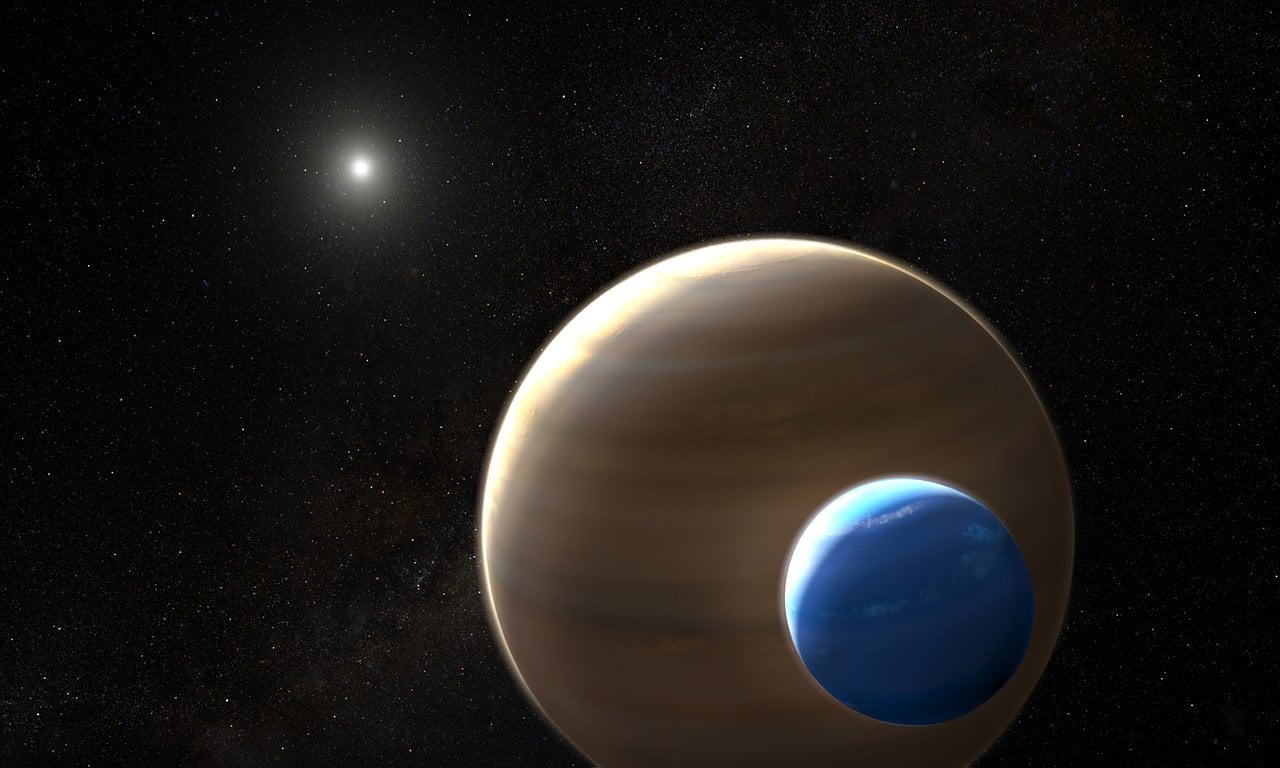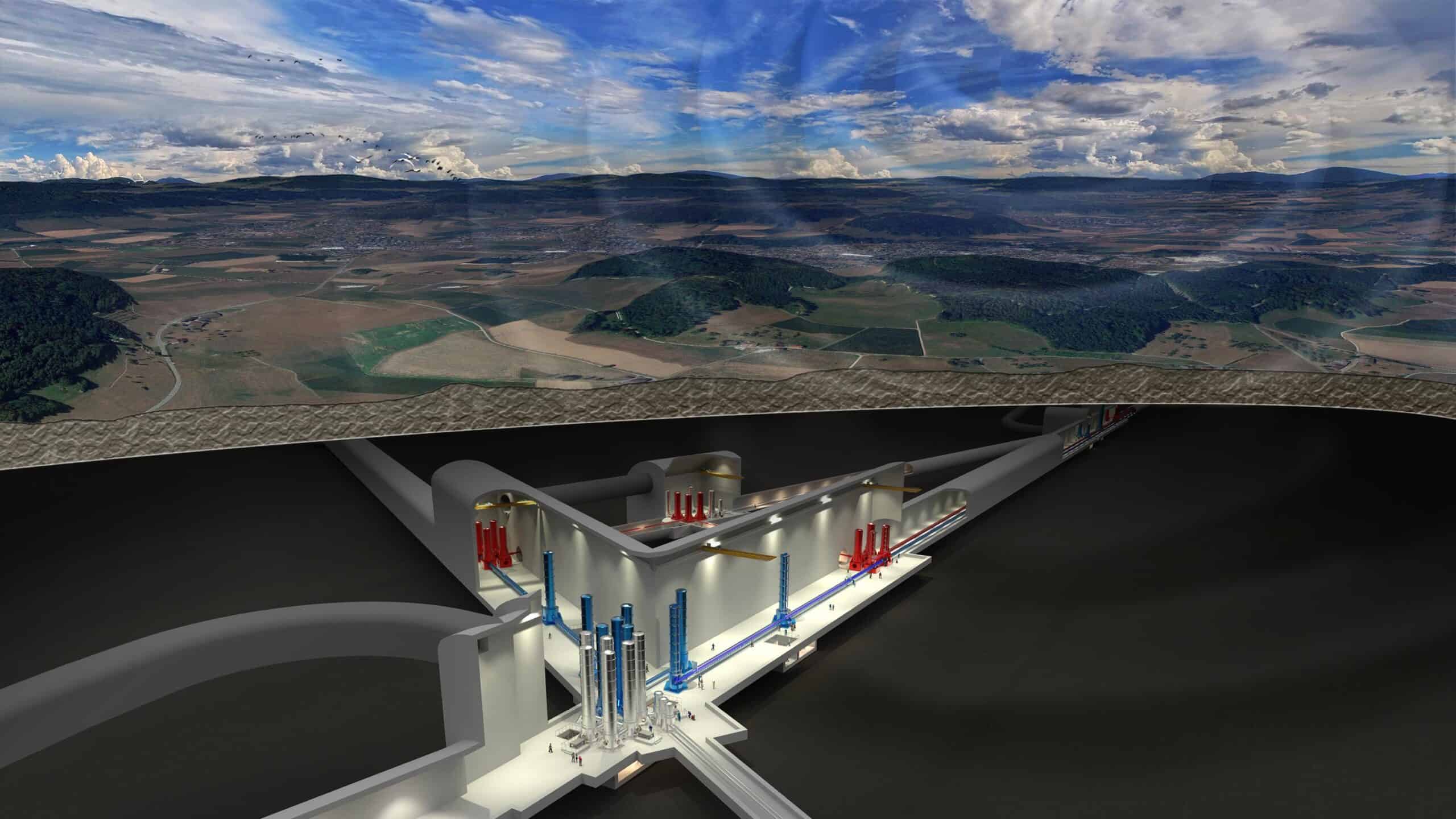
For generations, people have wanted to know more about Earth’s environment and everything beyond our galaxy. Thanks to ever more advanced technology, scientists are also gaining more and more knowledge, not just about the formation of Earth.
However, the hunt for exoplanets – planets outside our solar system — provided its first results only 30 years ago. Nowadays, astronomers find unknown planets on a regular basis, the search for moons orbiting exoplanets was not successful … until today.
With the NASA/ESA Hubble Space Telescope two scientists have now found compelling evidence for a large exomoon outside our solar system. The collected data point to an exomoon I a star system 8,000 light years from Earth
“The first clues to the existence of an exomoon already existed in 2017, prompted by data collected by NASA’s Kepler telescope,” says Mathias Jäger. pres officer of the European Space Agency (ESA) in Garching near Munich. At that time, the NASA space telescope Kepler discovered first evidence of an exomoon orbiting planet Kepler 1625b in the Constellation Swan.
Using the NASA/ESA Hubble Space Telescope, two scientists from Columbia University in New York (USA) have studied the star Kepler 1625 and its planet Kepler 1625b in more detail and have found compelling evidence for a large exomoon orbiting Kepler 1625b. If confirmed, this would be the first discovery of a moon outside our solar system.
There are hardly any similarities between our moon and Kepler 1625b-i. “Kepler 1625b is several times more massive than Jupiter,” says Jäger. “Also its moon is probably a gas giant, too (about the size of Neptune). Therefore, the similarities are very limited. The mass ratio between Kepler 1625b and his moon (about 1.5 per cent of the mass of its planet) is very similar to that of Earth’s moon.”
The distance to its star Kepler 1625 is also similar to the distance between the Sun and Earth, which, according to ESA, “places it at the inner edge of the habitable zone of the star system,” because moderate temperatures allow for the existence of liquid water. Since both bodies are considered to be gaseous, they are therefore unsuitable for life as we know it.
The moon, Kepler 1625b-i, is unusual because of its large size. Such gigantic moons are unknown in our solar system. “This may yield new insights into the development of planetary systems and may cause astronomers to revisit theories of how moons form,” Alex Teachey, a graduate student who led the study, explained.
“We only have a limited number of moons in our solar system that we can study, so any other object will help us better understand how moons form,” says Jäger. “A gaseous moon does not exist in our solar system, so we have a new subtype of the moon that astronomers can study.”
Further observations are necessary
To find evidence for the existence of the exomoon, the team observed the planet while it was in transit in front of its parent star, causing a dimming of the starlight. “We saw little deviations and wobbles in the light curve that caught our attention,” David Kipping, second author of the study, said.
The planet was observed by Hubble before and during its 19-hour-long transit. After the transit ended, Hubble detected a second and much smaller decrease in the star’s brightness approximately 3.5 hours later, consistent with the effect of a moon trailing the planet. “It was definitely a shocking moment to see that light curve — my heart started beating a little faster, and I just kept looking at that signature,” David Kipping described his feelings. Unfortunately, the scheduled Hubble observations ended before the complete transit of the moon could be captured.
In addition to this second dip in the light curve, Hubble provided compelling supporting evidence for the moon hypothesis by detecting the planet’s transit more than an hour earlier than predicted. This is consistent with a model of the system in which the planet and its moon orbit a common centre of gravity, causing the planet to wobble away from its predicted location.
Unfortunately, there is no hundred per cent proof for the existence of an exomoon yet, even if everything points to it. The anomaly in the light curve could also be caused by the gravitational pull of a hypothetical second planet in the system. However, the Kepler Space Telescope has found no evidence for additional planets around the Kepler 1625 during its four-year mission.
“Unfortunately, the existence of the moon is not proven with certainty. Based on our knowledge of the system, the observed change in brightness of the star can most probably be explained by a large exomoon”, confirms Jäger. “But also another, so far unknown planet cannot be completely excluded. Further observations are necessary to confirm the moon.”
Pictures: ESA








